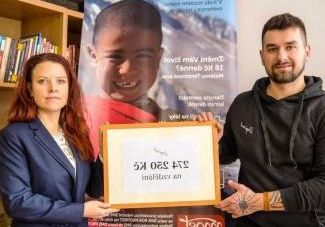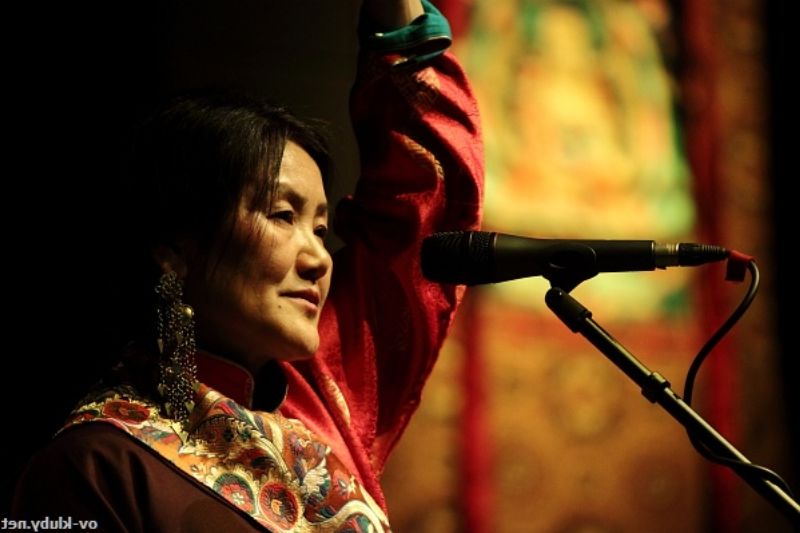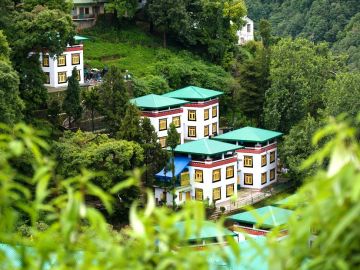The non-governmental charity Tibetan Homes Foundation (THF) has been helping Tibetan orphans, semi-orphans, child refugees and children from poor Tibetan families since 1962. It was founded by the HH Dalai Lama and his sister soon after fleeing Tibet as thousands of Tibetans followed him fleeing the Chinese invasion of India. With the help of the government-in-exile and Indian officials, it was possible to build an incredible infrastructure for Tibet in the foothills of the Himalayas.
At the time of its establishment, the village had three homes and 75 orphaned child refugees, over time it grew into an institution with more than 2,500 children who left their homes and families in Tibet and embarked on a very dangerous journey across the Himalayan saddles to India in search of new opportunities. Nowadays, Tibetan children do not flee Tibet in exile for education to the extent that they did before 2008, because the border situation has worsened and the crossing is much more risky. The support of the exile villages is aimed at the children of the third generation of Tibetan families living in exile in India, who are in a difficult life situation.
The Tibetan Homes Foundation organization has a total of three branches: in the city of Mussoorie (Masuri), Rishikesh and Rajpur.
The main goal of THF is to provide children with a modern education with an emphasis on language skills. The standard language is Tibetan, and the children also learn Hindi and English. Education also includes familiarization with traditional values and traditions (music, dances, painting, crafts) that are inherent to the Tibetan nation. There are secondary and preparatory schools in Mussoorie, Rishikesh and Rajpur. The schools are affiliated to the Central Board of Secondary Education (CBSE) in India.
The homes provide all care free of charge, which is made possible by donations from organizations, individuals and to a small extent by contributions from the Government of India. The government-in-exile focuses on the preservation of Tibetan culture as part of the “Himalayan Heritage Preservation” program. Therefore, children from the Himalayan region, which is culturally, ethnographically, religiously and geographically connected to Tibet, are accepted.
Family Homes in Mussoorie
Exile schools are unconventional in that, in addition to educating children, they also function as SOS villages or boarding schools and provide children with all their basic needs.
The village of Mussoorie has 58 houses where the children live as a big family. Thousands of children are cared for together by foster parents. During the time of fleeing from Tibet, the children went through immense physical and mental trauma of being separated from their families and home, risking their lives fleeing to India and finding themselves in a completely different culture and environment. More than anything else, these children craved love and a sense of belonging. The next generation of children already born in exile do not face such traumas, but they are distant from their families and lack family love. In homes, foster parents try to fulfill their role with the greatest dedication.
The work of family houses is unique in itself. Daily chores such as cooking and cleaning are done by the children themselves, assisted by ‘foster parents’. All older children are included in the homework schedule and younger children are assigned to them. In this way, older children take care of their younger brother or sister, helping them with laundry, bathing, homework and other things. This creates a sense of belonging and family, and above all, children are raised in this way in the values of love, care, responsibility, honesty, hard work and compassion.
Mrs. Tsering Youdon takes care of us donors who financially support the running of the village. He gives us the following words: “At the Tibetan House Foundation, we have two different types of family houses in which children live – Larger Family Houses and Smaller Family Houses. In the larger family houses, we have a parent couple who take care of the children, who are around 40 to 50 in these family houses. The smaller family houses are part of the two SOS branches in Mussoorie and in Rajpur. These family houses have 12 to 14 children and each one has an aunt who takes care of them and plays the role of a mother.
When children finish 9th grade, they have to leave their home and live in senior boys and girls hostels. In hostels, children are mostly left on their own to instill in them a sense of personal responsibility. Children stay in dormitories for three years, where they lead an independent life, with only one carer taking care of them. These children are advised to devote most of their time to studies as they have to pass two exams in 11th and 12th grade. Children in hostels don’t have to cook.’
We also learn: “Study at school starts at an early age. Children can attend Montessori kindergarten from the age of three. Here, they get to know numbers and letters for the first time in a playful way and learn with the help of poems and dances. The goal is for children to perceive school as fun and prepare for further education.
Throughout the first grade, from grades 1 to 5, all subjects are taught primarily in Tibetan (science, mathematics and other modern subjects). They have the necessary textbooks in the Tibetan language. At the second level, from the 6th to the 10th grade, the education system changes significantly. The goal is to prepare children for national exams and, above all, for
The goal is to prepare children for national exams and, above all, to succeed in everyday life. The language of instruction changes from Tibetan to English, Hindi is also taught, and project-based learning, collaboration and practical application are emphasized in all subjects.
The first and second levels of education have a common general focus and children take all subjects compulsorily. Only in the last two years of study do students specialize. For the 11th and 12th grades, they can choose from three directions: 1. specialization in scientific fields, 2. in economics or 3. in humanitarian studies. All three should prepare them for future study at a selected Indian university. They can study there if they have excellent results and are provided with a state scholarship, or if they have “their” donor who allows them to continue their studies.
Higher studies
Despite limited resources, THF strives to provide university scholarship for professional fields. Scholarships are awarded based on exam results. The scholarship consists of tuition fees, housing and clothing allowance and pocket money. Currently, there are approximately 366 students in the program pursuing higher studies in several colleges, universities, institutions across India.”
Individual schools then try to enrich the children’s program with celebrations of traditional holidays, traditional clubs, sports games and other activities, on which a strong emphasis is placed. Tibet Days are thematic days dedicated to topics from Tibet. In this slightly busy time every year, everyone gets to know each other about their culture through different areas such as history, religion, geography, art, society and family. Children enjoy this time very much because they can be creative and show their natural playfulness vividly. The most diverse types of creative consolidation of their roots from dance, theater, art, technical, literary and poetic, supplemented by painting, drawing and sewing, they can realize all this in their project days and imagine each other’s works.
Medical care
The school is equipped with a primary medical facility and an infirmary. The doctor has a nurse, a modest surgery and an area with beds for long-term sick children. They also have an X-ray or a dental office here. Seriously ill patients tend to be accommodated in hospitals located near the city of Dehradun. Jaundice and tuberculosis is the most common disease phenomenon in children in THF. A preventive vaccine is therefore administered to treat jaundice. Emphasis is also placed on improving the quality of nutrition and hygiene.
Apart from school facilities for children, THF also runs 2 homes for the elderly in Mussoorie and Rajpur.
Related news
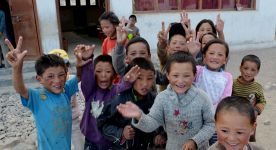 23. 1. 2022
23. 1. 2022 What have we achieved together in 2021?
In 2021, we together managed to provide CZK 6,393,421 to help poor Tibetans. Where did this beautiful sum bring joy?
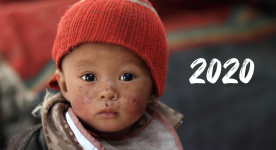 19. 1. 2021
19. 1. 2021 What have we achieved together in 2020?
Dear friends, allow us to thank all of you from the bottom of our hearts who joined with our projects and supported Tibetans and Tibetan culture in 2020.
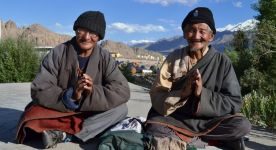 23. 1. 2020
23. 1. 2020 What have we achieved together in 2019?
Together we have managed to provide CZK 4,584,064 to help poor Tibetans. Where did this beautiful sum bring joy?

